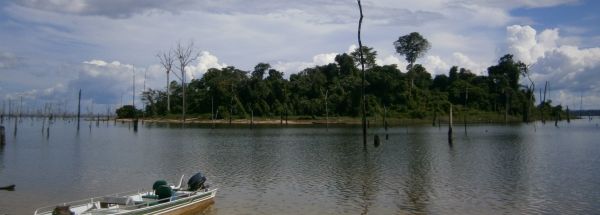The recommendation – published in the Journal of Applied Ecology – emerged from a new study that focuses on the Balbina Hydroelectric Reservoir system in the Brazilian Amazon. Like many hydropower systems in the region, the Balbina dam caused extensive forest fragmentation, with large swathes of land flooded once the dam was closed, transforming former hilltops into islands.
The combined area of forest islands created during reservoir filling is not currently explicitly considered in the Environmental Impact Assessment and licensing process of dams. Experts found that tree communities on Balbina’s islands are “unstable”, with some rare species becoming extinction-prone due to reduced tree recruitment and density. This could potentially lead to future losses in biodiversity and ecosystem functioning, such as carbon storage, across Balbina’s 3,500 reservoir islands.
Dr Isabel Jones, the ecologist from Stirling’s Faculty of Natural Sciences who led the research, said: “Ideally, we recommend that dams should not be constructed in lowland tropical forest regions such as the Amazon basin, due to the far-reaching impacts of river impoundment on aquatic and terrestrial biodiversity. However, where no alternative is available, we hope to improve the environmental impact procedure and impact mitigation of future dams, by providing robust recommendations regarding dam development and operation.”
Continue reading at University of Stirling
Image via University of Stirling


